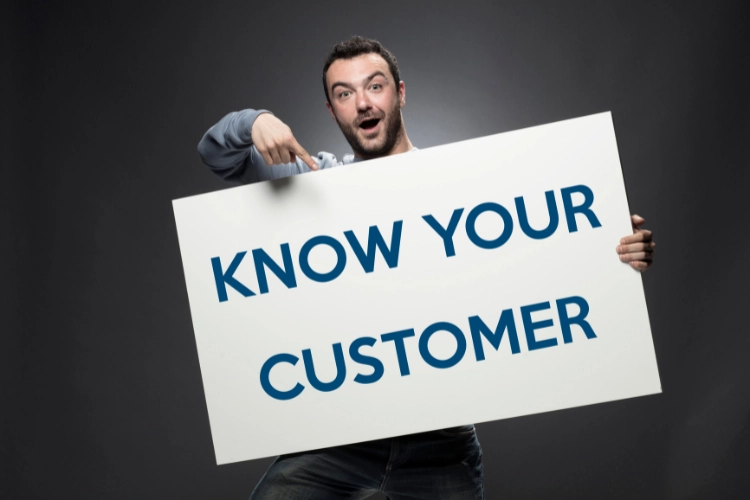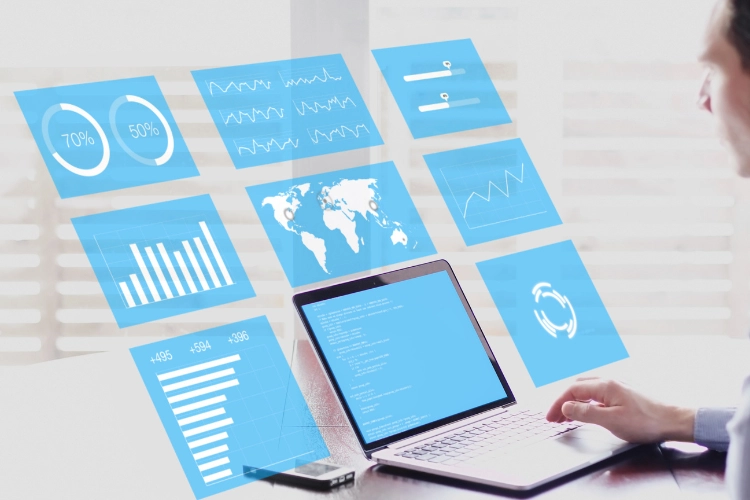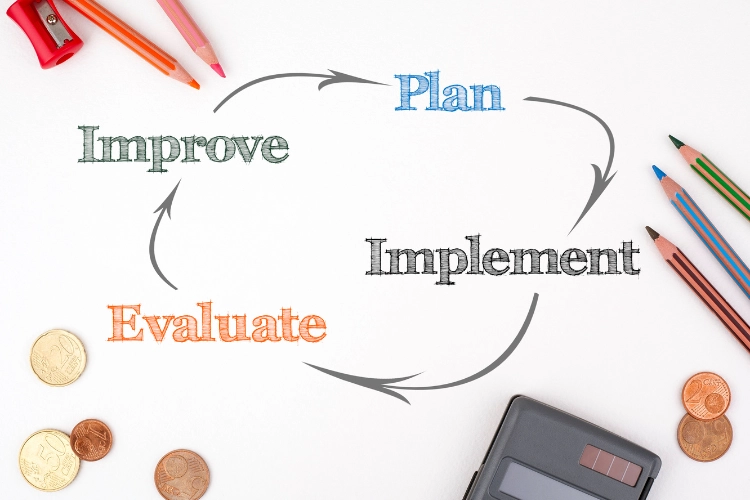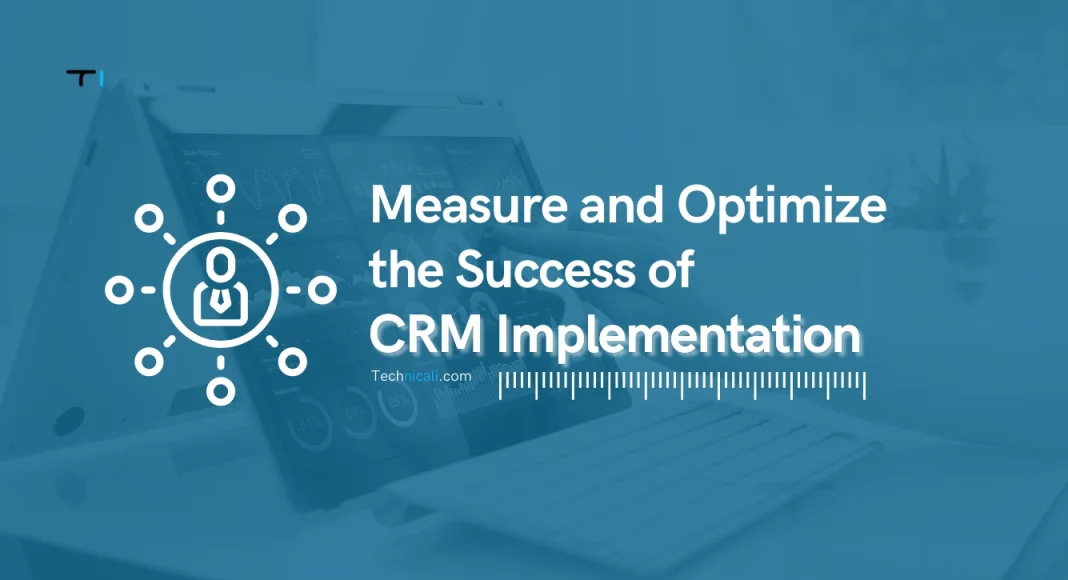As a CEO or manager of a SaaS business, you know how meaningful customer relationships are. Rachel Hayes was in this position not too long ago and had to figure out the best way to measure and optimise her CRM implementation to ensure success. She found that measuring and optimising her CRM implementation gave her more insight into customer behaviour patterns, allowing her to personalise the experience for customers while increasing customer satisfaction and loyalty.
This detailed article will provide you with an overview of how to measure and optimise your own CRM implementation so that you can achieve similar results.
Contents
- 1 Why Measuring and Optimising Your CRM Implementation is Important
- 2 Setting Goals for CRM Implementation Success
- 3 Measuring the Performance of Your CRM Implementation
- 4 Identifying Areas for Improvement in Your CRM Implementation
- 5 Common CRM Implementation Challenges and How to Overcome Them
- 6 Optimising Your CRM Implementation
- 7 Conclusion
Why Measuring and Optimising Your CRM Implementation is Important

In today’s highly competitive landscape, businesses of all sizes need to have strong customer relationships. By measuring and optimising your customer relationship management implementation, you can gain invaluable insights into customer behaviour that will help you to better understand how customers interact with your product or service. This understanding will allow you to tailor the customer experience to ensure maximum satisfaction and loyalty.
Assessing the Health of Your CRM Implementation
The first step in assessing the health of your CRM implementation is to identify key metrics that are important for measuring its success. These may include conversion rate, average order size, customer lifetime value, customer retention rate, etc. You should also set target goals for each metric; this will give you a benchmark against which to measure progress and identify improvement areas.
Once you have identified the key metrics and set goals, you should start to measure the performance of your CRM implementation. This involves analysing overall metrics and segmented and demographic metrics to identify changes in customer behaviour. It also evaluates sales and marketing campaign metrics to determine which tactics are successful and which need further optimisation.
The Impact of Successful CRM Implementation
When done correctly, measuring and optimising your CRM implementation can positively impact the customer experience. By understanding customer behaviour patterns, you will better tailor the experience for each customer(or call it a segment of customers). This increases customer satisfaction by providing a personalised service that caters to their needs.
And.. Exactly What do Strong Customer Relationships Mean for any Business??
You Guessed it Right! Increased Customer Loyalty & Retention Rate and Higher Revenue.
Setting Goals for CRM Implementation Success
When setting goals for your CRM implementation, including both short-term and long-term objectives. Short-term goals should be realistic and achievable within a reasonable timeframe, while long-term goals should reflect the overall vision for your organisation.
Identifying Key CRM Metrics to Track

It is essential to identify key metrics to track to measure your CRM implementation’s success. These may include customer lifetime value (CLV), conversion rate, average order size, retention rate, etc. Setting target goals for each metric in the customer lifecycle will help you identify areas needing improvement.
Customer-Related CRM Metrics
Customer-related metrics include CLV, conversion rate, average order size and retention rate.
- CLV measures the total amount of money a customer spends during their lifetime with your business.
- Conversion rate is the percentage of visitors who take a desired action on your website, such as purchasing or signing up for an account.
- Average order size refers to the average dollar amount per order customers place.
- Retention rate is the percentage of customers who continue to purchase from you over time.
Understanding Target Goals for Key Metrics

Once you have identified key metrics and set goals, measuring and tracking performance is essential. Doing so will help you identify areas that need improvement and enable you to adjust target goals as required.
Marketing and Sales Metrics to Assess the Effectiveness of CRM Implementation
In addition to customer metrics, it is also essential to assess the effectiveness of your CRM implementation by tracking sales and marketing metrics. These include lead acquisition cost (LAC), cost per acquisition (CPA) and return on ad spend (ROAS).
- LAC is the total cost of acquiring a new customer.
- CPA is the amount you spend to acquire a paying customer.
- ROAS measures how much revenue your business generates for every dollar spent on marketing and advertising activities.
Customising Key Metrics and Targets for Your CRM Implementation

Once you have identified the key metrics, it is important to customise them to reflect your organisation’s unique needs. This may involve adjusting target goals or introducing additional metrics specific to your industry, organisation or rockstar team members.
Internal Team Performance Metrics
With customer, marketing and sales pipeline metrics, it is also essential to track internal team performance. This can help you identify areas of improvement and recognise top performers. Examples of internal team performance metrics include response time, Customer effort score, and close rate.
- Response time is the amount of time it takes for a customer service rep or salesperson to respond to a customer inquiry.
- Customer effort score measures how much effort it takes the customer to complete a task; it is also relatable to customer satisfaction, which is why this metric should be tracked.
- Close rate is the percentage of leads successfully closed within a specific time frame, which can help you identify areas for improvement in your sales process.
Measuring the Performance of Your CRM Implementation

Measuring anything is essential for controlling outcomes and crafting an optimal path for achieving the desired outcome. So, Call it measurement = Improvement. Metrics can and should be tracked over time to measure the success of your CRM implementation. By analysing key metrics and adjusting target goals as needed, you can optimise your CRM performance to ensure that it meets your organisation’s needs.
From Customers to Team metrics, the list shouldn’t focus on the abovementioned. You should sit with your revops and decide which metric they need to track and how.
By tracking customer-related metrics such as CLV and conversion rate, marketing strategy and sales pipeline metrics such as LAC and CPA, and internal team performance metrics such as response time and close rate, you can ensure that your CRM implementation is working to its fullest potential. By customising metrics and optimising your performance over time, you can ensure that your organisation achieves successful outcomes.
To evaluate the effectiveness of your CRM implementation, it is crucial to examine demographic and segmented metrics. As previously mentioned, customer segmentation is an effective way to customise your approach to each customer and personalise their experience.
By tracking which segments are generating the most revenue, conversion rate, or any other desired metric, you can understand where your customers are coming from. This allows you to adjust target goals according to customer demographics or preferences. Segmented metrics also provide valuable insights into understanding customer behaviour, allowing you to tailor campaigns and strategies accordingly.
Another critical thing to wire in your brain is that tracking and optimising key metrics isn’t reserved only for large corporations or tech-savvy entrepreneurs. It’s essential for any saas business CEO or manager who wants their organisation to perform at its best and continue growing.
If you use any latest CRM vendors, metrics are already getting collected. You just need to put the right people in place and regularly review performance data to effectively manage your CRM implementation and ensure it works for you.
Identifying Areas for Improvement in Your CRM Implementation

It is important to identify areas of improvement to maximise the potential of your CRM implementation.
This can be done by analysing customer-related metrics, such as customer support satisfaction and Net Promoter scores, as well as internal team performance metrics.
By understanding which areas need fine-tuning, you can adjust target goals accordingly and ensure that everyone in your organisation is working towards a common business goal. Troubleshooting any technical issues within the CRM will provide a smoother experience for both customers and employees.
Common CRM Implementation Challenges and How to Overcome Them
Oh, come on now! Why are we still struggling with implementation challenges regarding CRM systems? It is already well-known that poor user adoption rates, data privacy concerns, and lack of resources are common issues that can hamper the success of any CRM project. So, why do we ignore these obstacles and end up with suboptimal CRM performance?
Let’s face each one of them and find ways to overcome those issues:
User Adoption

User Adoption is One significant challenge businesses face when implementing a CRM is user adoption. Users may resist change, mainly if they are accustomed to using existing systems. Also, if the CRM system is too complex, users may find it challenging to navigate and utilise, leading to low adoption rates.
To address the issue of low user adoption rates, a business can take several steps:
- Provide adequate training to help users understand the CRM system’s features and how to use them effectively.
- Establish clear communication channels to keep users informed of system updates and changes.
- Make sure that the CRM tool is user-friendly and easy to use.
- Gain user buy-in through executive sponsorship and user input into the system’s design and features.
Data Quality

The quality of the data used in the CRM system is a critical success factor in CRM implementation. Inaccurate, incomplete, or inconsistent data can lead to errors in reports and analytics, causing poor decision-making. Incorrect data can also negatively affect customer engagement.
To ensure that the CRM software contains accurate and quality data, a business should:
- Establish clear data governance policies and procedures to manage and maintain the data.
- Set data quality standards and regularly audit the data to identify and resolve issues.
- Define data entry requirements and train users on data entry best practices to maintain data quality.
- Use data validation rules and error-checking features to detect and correct data errors.
Integration with Other Systems

Integrating the CRM vendors with other business systems can be a challenge, particularly if the other methods are incompatible or require significant customisations to integrate. A lack of integration or API availability leads to data duplication, inconsistent data, and limited data availability across systems.
To integrate the CRM platform with other business systems, businesses can:
- Use integration tools that can easily integrate with other systems.
- Develop a custom integration solution that meets specific business needs.
- Ensure that data is consistent across systems through data mapping and synchronisation.
- Conduct thorough testing to ensure that the integration works as expected.
Customisation

Customising the CRM strategy to fit specific business needs can also present a challenge. The default settings of the CRM may not be sufficient to match the organisation’s needs. Customisation may increase complexity and make it harder for users to use the system effectively.
To customise the CRM technology to meet specific business needs, businesses can:
- Understand the business processes and requirements to tailor the CRM system to match those needs.
- Use the customisation features of the right CRM system to modify fields, forms, workflows, and reports.
- Engage third-party integrators or consultants to assist with more complex customisations.
- Regularly review customisations to ensure they fit the business process and the system’s evolution.
Budget Constraints

Implementing a CRM system can be expensive, particularly when there are licensing and hardware costs, infrastructure planning costs, and user training costs, among others. Businesses must have a realistic budget that covers all the costs associated with CRM implementation.
To overcome budget constraints, businesses can:
- Establish a realistic budget that covers all the costs associated with the CRM implementation.
- Understand Triple Constraints Like Scope, Time, and Budget.
- Choose a CRM system that meets business requirements and doesn’t require significant customisation to reduce costs.
- Leverage open-source or cloud-based CRM systems that reduce hardware and infrastructure costs.
- Consider phased implementation to spread the cost over an extended period.
Change Management

CRM implementation involves significant changes in processes and systems, which can be challenging for some users. A lack of proper change management activities, such as user training and communication, could result in resistance to change and low user adoption.
To overcome user resistance to change, businesses can:
- Develop and communicate clear project objectives, timelines, and benefits to get management buy-in.
- Create a sense of urgency by explaining the risks of not implementing the new system.
- Involve users in the CRM system’s design, testing, and implementation stages to create a sense of ownership and drive user acceptance.
- Provide adequate user training and ensure the proper support is available post-implementation.
Technical Issues

Technical issues such as system downtime, connectivity problems, and software bugs can all impact the effectiveness of the CRM system. These challenges can cause frustration for users and managers alike, leading to a possible loss of confidence in the system.
To address technical issues, businesses can:
- Conduct regular system maintenance to keep the system running smoothly.
- Address any problems quickly and effectively by involving technical staff and vendor support.
- Conduct thorough testing before and after system upgrades or changes to reduce the risk of system downtime.
- Have adequate backup procedures to ensure data is secure during system failure.
Optimising Your CRM Implementation
Implementing a CRM solution is only half the battle won. To truly benefit from CRM implementation, you must continually evaluate and optimise its usage.
Measuring and optimising the success of your CRM implementation is vital to identify areas for improvement.
- Define Business Goals and KPIs: Identifying the intended outcome of CRM implementation, which can be increasing customer satisfaction, widening business outreach, and enhancing revenue streams.
- Measure Performance: Analysing KPIs against the intended goals to determine how well the CRM system provides expected results.
- Audit Data Regularly: Ensuring data accuracy and up-to-date information by conducting a periodic database audit.
- Seek Feedback from Teams and Customers: Soliciting feedback from internal teams and customers to recognise concerns and address improvement areas.
Customising Your CRM to Maximise Personalisation

Personalising the customer experience has become essential in today’s customer-centric landscape. By customising your CRM, you can tailor messaging, offers, and experiences to better match customer preferences, increasing customer satisfaction and retention.
- Segmentation: Categorising customers into smaller groups based on demographics, past behaviour, or other relevant criteria.
- Message Tailoring: Modifying messaging to fit each customer segment’s distinctive preferences.
- Workflow Automation: Using automatic messaging to expand and personalise customer interactions.
Example: A health insurance provider’s CRM system categorises users as either smokers, non-smokers, or former smokers. It considers this mainly to provide value-based insurance quotes to customers based on their category. Apart from the standard personalised messaging, they created an endorsement strategy targeting non-smoking customers, compelling them to keep making healthy choices.
Effective Communication Tactics Using Your CRM

Effective communication is vital to building strong customer relationships. Your CRM can help you understand and communicate effectively with your customers.
- Centralisation of Communication: Collecting all communication and customer data within the CRM platform, creating a consolidated database
- Customising and Strategising Communication: Using customer information and data to structure tailor-made interactions.
- Chatbot Incorporation: Adding chatbots to improve response time, reduce costs, and provide 24/7 support.Scheduling:
- Email Automation: Automated scheduling of emails, messages, and newsletters based on customer segmentation.
- Omni-Channel Communication: Providing support on multiple channels such as email, chat, social media, and phone to offer customers more choices.
Example: A SaaS company used their CRM to foster customer relationships via automated emails. They implemented an email automation workflow that sent regular newsletters to users containing important updates, helpful tips, and product discounts based on their past behaviour. This enabled them to increase engagement by delivering targeted content that resonated with specific customer segments.
Example 2: A law firm implements CRM software that logs every customer conversation, making the customer’s communication history easily accessible for future reference. They customise their communication styles by sending periodic notifications and updates about their clients’ cases at a routine cadence, keeping them up-to-date to maintain better relationships.
Ideas to Maximise Your CRM to Achieve a Better Customer Experience

To maximise the benefits of your customer relationship management system, you must leverage its full capabilities to provide outstanding customer experiences.
- Loyalty Programs: Offering loyalty and referral programs to reward customers for their continuous patronage.
- Personalised Promotions: Providing personalised promotions and suggestions based on customers’ past purchases and behaviour.
- Self-Service Portal: Creating a self-service portal for customers to handle their accounts and access information.
- Proactive Solutions: Utilising CRM data to predict potential issues and offer proactive customer solutions to demonstrate customer value.
- Community Building: Creating a platform for customers to connect and interact with each other while also engaging with the company. It also helps to screen potential customers by acknowledging their doubts in communities.
- Upselling and Cross-selling: Allow your sales team to utilise CRM data to identify funnelling opportunities to upsell and cross-sell to existing customers.
Example: An e-commerce retailer provides personalised product recommendations based on the customer’s prior purchase history. Customers discover these recommendations on the website’s homepage or through targeted emails. As an additional thank-you for their loyal repeat customers, they offer a tiered loyalty program providing other discounts for returning customers. These customers can then utilise a self-service portal to manage their purchases, preferences and track their reward points.
Conclusion
You already knew! Well, Again. Optimising CRM Implementation is crucial to achieving success in enhancing customer satisfaction and customer retention, widening your business outreach, and increasing revenue streams.
By defining goals and KPIs, measuring performance, auditing data regularly, and seeking feedback from internal teams and customers, you can identify areas for improvement and make necessary changes to optimise your CRM usage. Customising your CRM, effective communication tactics, and maximising its full capabilities can all contribute to providing exceptional customer experiences. If you’re looking to select a CRM solution that suits your business needs, check out our top 7 CRM selections for expert guidance.
So there you have it. Put the power of CRM to work for your organisation, and watch as customer loyalty and revenue streams increase!



